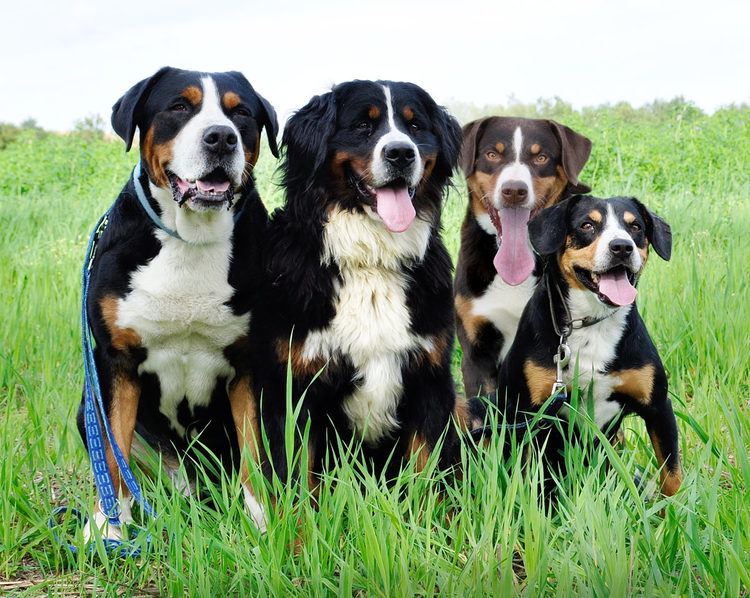 | ||
Height Bernese Mountain Dog: 64 – 70 cm Mass Bernese Mountain Dog: 39 – 50 kg Lifespan Bernese Mountain Dog: 6 – 8 years, Greater Swiss Mountain Dog: 8 – 11 years Representative species Bernese Mountain Dog, Greater Swiss Mountain, Entlebucher Mountain Dog, Appenzeller Sennenhund | ||
Greater swiss mountain dog cries when you stop petting him
Sennenhund, called Swiss mountain dogs or Swiss cattle dogs in English, are a type of dog originating in the Swiss Alps. The Sennenhund are farm dogs of the general molosser type. There are four breeds of Sennenhund, all sporting a unique tricolor coat. While the two larger ones share a heavy build and a calm temperament, the two smaller ones are more agile. The breeds range from medium in size to very large. The name Sennenhund refers to people called Senn or Senner, Swiss alpine herdsmen and dairymen, and does not translate as "mountain" or "cattle".
Contents
- Greater swiss mountain dog cries when you stop petting him
- Greater swiss mountain dog charlie plays with child
- Breeds
- History
- Similar breeds
- Tri color
- Breed examples
- References

Greater swiss mountain dog charlie plays with child
Breeds
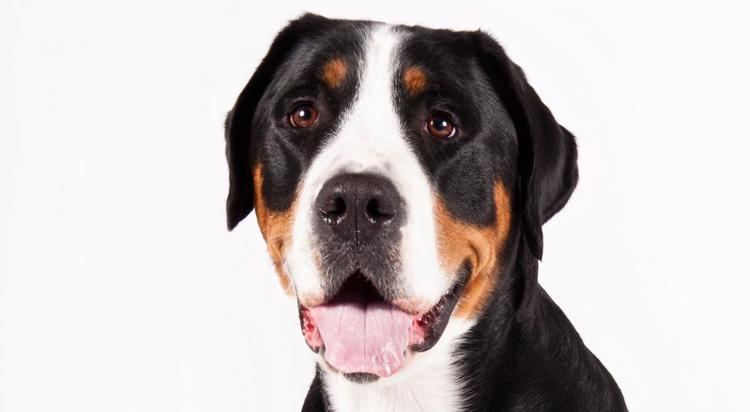
This table shows the relative sizes of the breeds, with the original breed name followed by the most popular English version of the breed name.
The four Sennenhund breeds are well known in Switzerland and the rest of Europe. In the United States, the Bernese Mountain Dog has become somewhat popular, while the other breeds are promoted as rare to those seeking unique pets.
History
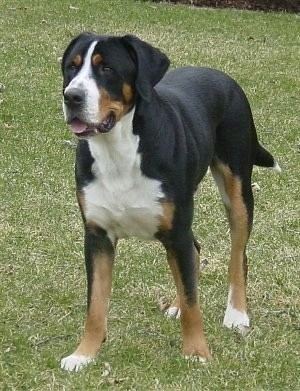
Although said to derive from Roman molossers, the area from which the type originated never had Roman roads or towns. The dogs may have arrived much earlier than Roman times as part of the ancient transhumance. The word Senn or Senner is the term for Alpine herdsmen and dairymen (an Alpine meadow is called a Sennelager) who tend other farmers' cattle and sometimes sheep; Sennenhund means "dogs of the Senn". Sennenhund were not just cattle dogs, but were kept as general farm dogs, working as livestock guardian dogs and as herding dogs when necessary, as well as guarding the farmers' families, homes, herds, and flocks. The guarding function was especially necessary in earlier times, when wolves and other large predators threatened livestock and people. The larger Sennenhunds were also used for pulling carts.
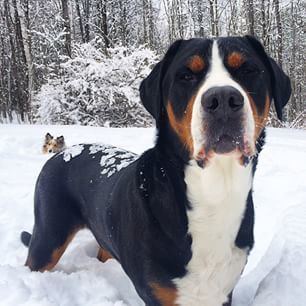
Today, with the reintroduction of wolves, research is being done on the use of these dogs to protect livestock.
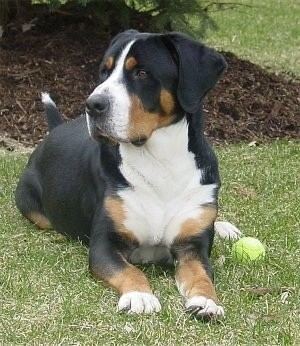
A red and white color once found in the Sennenhunds was said to be from crosses with the St. Bernard dog, a breed from the Alps also said to be descended from Roman molossers.
The Sennenhund, especially the largest ones, began to disappear in the 1800s with the decline in need for butcher's dogs and carting dogs. The efforts of Alpine geologist and indigenous Swiss dog breeds advocate Albert Heim (1849-1937) brought various examples of Sennenhund to an International Dog Show in 1908. At that point Heim and other members of the Schweizerische Kynologische Gesellschaft (Swiss Kennel Club) began sorting out the dogs by what they judged to be representative breed types, and naming the four breeds. See individual breed articles for the history of the first breed clubs and the writing of standards which defined the separate breeds of the type.
Similar breeds
The St. Bernard was one of the first breeds of dogs to be documented and differentiated from other large farm dogs of the area. Except for color and historical documentation, the St. Bernard is very similar to the largest Sennenhund. Official documents from the hospice in St. Bernard Pass concerning the dogs date back to 1707, with paintings and drawings of the dog even earlier. The breed was the very first breed entered into the Swiss Stud Book in 1884, and the breed standard was finally approved in 1887. The Sennenhund did not begin to be divided into breeds until 1908.
Another butcher's dog from Germany, the Rottweiler, is similar in shape to the Sennenhunds, and may be related.
Tri-color
A tri-color coat is a pattern of some shade of black or brown, few shades of red is often called tan, and some white. Some have tan markings above the eyes. Eumelanin and phaeomelanin pigmentation occurs on the same dog; "the back is black from eumelanin pigment being made and the belly is tan or red from phaeomelanin pigment being made".
Breed examples
Examples of Sennenhunds, showing the similarity of the breeds and the characteristic tri-color coat.
